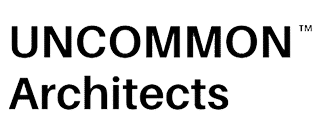Definition:
Growth hacking for architecture firms involves utilizing creative and unconventional marketing strategies to rapidly grow their business, increase brand awareness, and attract new clients in the competitive architectural industry.
Applications in Architecture
The concept of growth hacking is particularly relevant in architecture for identifying niche markets, optimizing online presence through SEO and social media strategies, and developing unique value propositions to stand out in a crowded market.
Uses:
Architecture firms can apply growth hacking strategies to drive website traffic, generate leads, increase conversion rates, and ultimately achieve sustainable business growth by implementing data-driven marketing techniques.
Examples:
Real-world examples of growth hacking in architecture include targeted email campaigns to attract new clients, A/B testing website designs for better user engagement, and leveraging influencer partnerships to expand brand reach.
Implementation
Procedure:
To implement growth hacking in architecture firms, start by conducting a thorough analysis of current marketing strategies, setting clear growth objectives, experimenting with different tactics, and continuously optimizing campaigns for maximum effectiveness.
Steps:
1. Conduct a marketing audit to identify strengths and weaknesses.
2. Set SMART growth goals aligned with business objectives.
3. Experiment with various growth hacking techniques such as viral marketing or referral programs.
4. Analyze data to measure the impact of each strategy and adjust tactics accordingly.
Considerations
Growth hacking in architecture requires a mindset focused on innovation, rapid testing, and continuous improvement to achieve sustainable growth in a competitive market.
Expected Outcomes
By implementing growth hacking strategies, architecture firms can expect increased brand visibility, higher client engagement, improved lead generation, and ultimately, significant business growth and expansion.
Outcomes:
The impact of growth hacking can lead to increased revenue, enhanced brand reputation, higher client retention rates, and a competitive edge in the architectural industry.
Impact:
Short-term impacts may include increased website traffic and lead generation, while long-term impacts can result in sustained growth, brand loyalty, and market leadership for architecture firms.
Maintenance and Monitoring
Continuous monitoring and optimization of growth hacking strategies are essential to ensure long-term success and sustainable growth in the architectural industry.
Best Practices:
To maintain the effectiveness of growth hacking efforts, architecture firms should regularly analyze performance metrics, test new strategies, and adapt to market trends for ongoing success.
Strategies:
Developing a culture of experimentation, data-driven decision-making, and agile marketing practices can help architecture firms sustain growth hacking efforts and remain competitive in the industry.
Are you ready to transform your studio?
FAQs
What is growth hacking for architecture firms?
Growth hacking for architecture firms involves using innovative strategies and techniques to rapidly grow and scale their business in a cost-effective manner.
How can architecture firms implement growth hacking?
Architecture firms can implement growth hacking by leveraging digital marketing, social media, networking, referral programs, and data analytics to attract and retain clients.
What are some growth hacking strategies for architecture firms?
Some growth hacking strategies for architecture firms include creating a strong online presence, optimizing SEO, partnering with influencers, offering free consultations, and utilizing email marketing campaigns.
Why is growth hacking important for architecture firms?
Growth hacking is important for architecture firms to stay competitive, reach new audiences, increase brand awareness, and ultimately drive business growth and profitability.
Can growth hacking help architecture firms expand their client base?
Yes, growth hacking can help architecture firms expand their client base by implementing targeted marketing strategies, innovative campaigns, and data-driven approaches to attract potential clients.
What role does technology play in growth hacking for architecture firms?
Technology plays a crucial role in growth hacking for architecture firms by enabling automation, data analysis, personalized marketing, and tracking of key performance metrics for continuous improvement.
How can architecture firms measure the success of their growth hacking efforts?
Architecture firms can measure the success of their growth hacking efforts through metrics like website traffic, conversion rates, lead generation, client retention, and return on investment (ROI) from various marketing campaigns.
What are the common challenges faced by architecture firms in implementing growth hacking strategies?
Common challenges faced by architecture firms in implementing growth hacking strategies include lack of digital expertise, limited budget for marketing, difficulty in measuring ROI, and adapting to rapidly evolving technology trends.
How can architecture firms stay innovative and competitive through growth hacking?
Architecture firms can stay innovative and competitive through growth hacking by constantly experimenting with new ideas, analyzing data for insights, staying updated on industry trends, and collaborating with other professionals to drive creativity and excellence.

